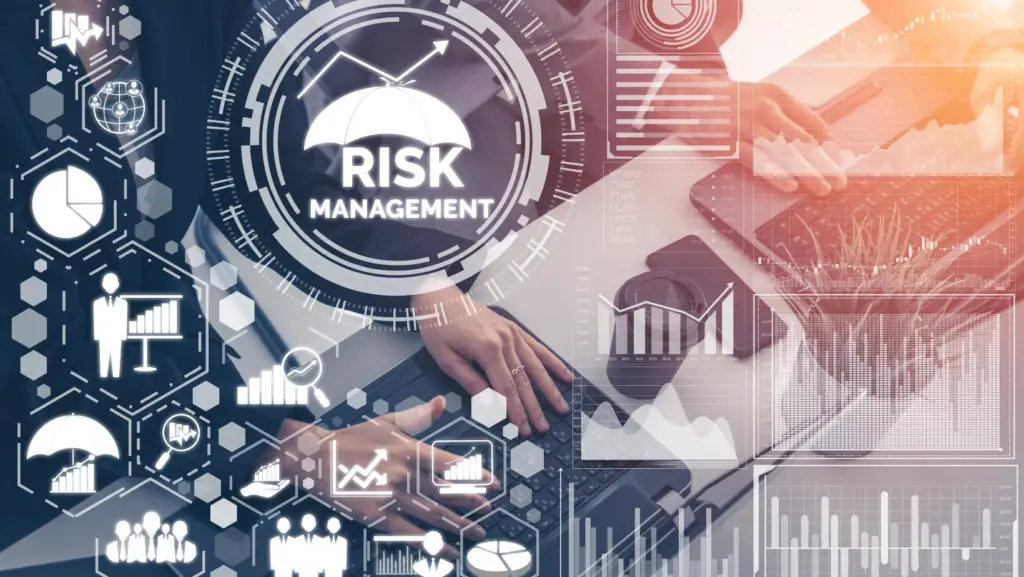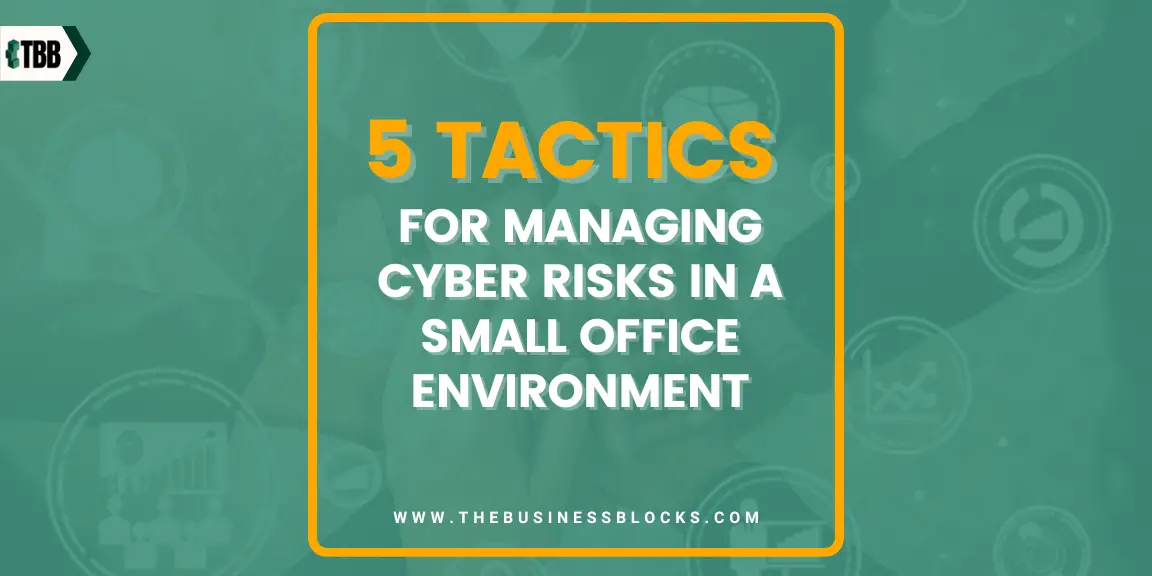Managing cyber risks is paramount as businesses increasingly rely on digital channels and networks. Companies can mitigate potential harm from external threats by ensuring that best practices are in place to protect data and secure all parts of a business’s digital infrastructure. This blog post will provide five tactics for small office environments to manage cyber risks much more effectively.
Do you want to Protect your Small Business from Cyber-attacks?
As the threats of hackers become more sophisticated, small businesses need to strengthen their security. These five tactics can help manage risks in a small office environment and safeguard your sensitive data against malicious actors.
Take control of your security by creating an incident response plan, enforcing password best practices, and conducting regular vulnerability scans. Get deeper protection with advanced solutions such as privileged or identity and access management.
Did you know?
- The global average data breach cost was $4.35 million in 2022
- Phishing remains the most common cyber attack, with approximately 3.4 billion daily spam emails- Source
Learn more about these five strategies today and start protecting your business!
What are Cyber Risks?

These risks refer to any threat posed to digital assets and can take many forms, from malware and phishing scams to data breaches and ransomware attacks. Cyber risks can have severe consequences, such as:
- Loss of sensitive data.
- Financial loss.
- Irreversible damage to a company’s reputation.
It is essential to stay informed and take preventative measures to mitigate these risks, such as implementing strong security measures and staying vigilant against suspicious emails and websites.
Different Types of CyberSecurity Risks and Attacks
These are just a few cyber risks and attacks affecting small business networks.
- Malware: Malicious software, also known as malware, is an umbrella term for various types of malicious code. It includes viruses, worms, Trojan horses, ransomware, and spyware. Malicious actors use malware to gain access to systems and devices or disrupt operations.
- Phishing: Phishing is an attempt by attackers to obtain sensitive information such as usernames, passwords, and credit card details by posing as a legitimate entity in an email or other type of communication.
- Social Engineering: Social engineering manipulates people into disclosing confidential information. Attackers may use social engineering techniques to gain access to systems, networks, and physical locations.
- Denial of Service (DoS) Attacks: A DoS attack is an attempt to make a server or network unavailable by flooding it with useless requests, making it unable to respond to legitimate traffic.
- Man in the Middle (MitM) Attack: In a MitM attack, attackers intercept and alter communications between two parties without either of them knowing.
How to Identify Cyber Risks?

You can identify cyber risks by understanding the basics of cyber security and common attack types and their most likely sources. These include hacking, phishing, malware, ransomware attacks, social engineering attacks, denial of service (DoS) attacks, data breaches, and more.
You can identify cyber risk by:
- Review system and server logs.
- Analyzing reports from security tools such as firewalls, antivirus software, and intrusion detection systems (IDS).
- Conduct regular vulnerability scans of your network.
- Awareness training for staff to identify potential risks.
These Cyber risks can be determined as they are common:
1. Unauthorized access to systems or data.
2. Malware, phishing scams, and other malicious attacks.
3. Social engineering tactics used by hackers.
4. Data breaches caused by external threats.
5. DoS attacks that can prevent users from accessing a system.
6. Ransomware attacks encrypt data for ransom.
Identifying and managing these cyber risks is of utmost importance to protect sensitive data and maintain the integrity of a company’s digital infrastructure.
Cybersecurity Risk Assessment
A cybersecurity risk assessment identifies, evaluates, and mitigates risks to an organization’s technology infrastructure. This includes hardware, software, networks, data storage systems, and all other digital assets.
A risk assessment aims to identify potential vulnerabilities in a system so that they can be addressed before it is too late. This process typically involves a combination of manual and automated tools to evaluate a system’s security posture, assess the level of risk, and recommend steps to reduce this risk.
Cybersecurity Risk Management Framework
The cybersecurity risk management process is a framework for assessing and mitigating risks.
It consists of five key steps:
- Identify risks – Identify potential security threats and vulnerabilities in the system.
- Assess risks – Evaluate the risk associated with each threat or vulnerability and prioritize them based on severity.
- Mitigate risks – Implement measures to reduce the risk associated with identified threats. Risk mitigation measures include patches, security software updates, and other corrective actions.
- Monitor risks – Track changes in the system and continually monitor security posture.
- Respond to incidents – Take prompt action when a security incident is detected.By following this framework, organizations can effectively manage cyber risks and protect their systems from malicious activity. Cybersecurity risk management is an ongoing process that must be monitored and revised as new threats arise.
The Advantages of Risk Management

Risk management is an essential part of any successful organization. It helps organizations by:
Identify and Manage Risks
Identifying and risk assessments help organizations identify potential security threats and vulnerabilities before malicious actors can exploit them.
Increase Efficiency
Risk management helps organizations streamline processes and optimize their cybersecurity posture, from security controls to incident response protocols. Their efficiency is increased by reducing or eliminating manual tasks.
Minimize losses and Maximize Profits.
Risk management helps to avoid, minimize, or transfer financial losses due to security incidents or data breaches.
Peace of Mind
Risk management also provides peace of mind, knowing that an organization’s digital environment is secure and protected from threats.
The importance of risk management cannot be underestimated. Organizations need an effective risk management process to protect their assets and maintain business continuity. By doing so, organizations can reduce the potential for loss or damage and remain competitive in the ever-changing cyber landscape.
5 Best Tactics for Managing Cyber Risks in a Small Office Environment

Here are five tactics small office environments can use to manage cyber risks:
1. Create an Incident Response Plan
To ensure preparedness for security breaches, all businesses must have a formal incident response plan that outlines the necessary steps. This plan must identify responsible parties for addressing the breach, restoring data methods, and internal and external communication procedures.
2. Enforce Password Best Practices
Enforcing strong password best practices is critical for securing any digital environment. Passwords should have at least 12 characters with a mix of upper- and lower-case letters, numbers, and symbols. It’s also important to change passwords regularly to reduce the risk of a breach.
3. Conduct Regular Vulnerability Scans
Vulnerability scans are an important component of any security strategy, as they help identify gaps or weaknesses in your system and provide valuable intelligence about potential threats. You should conduct regular scans to ensure your systems remain secure and up-to-date with the latest security patches.
4. Implement Advanced Security Solutions
Advanced solutions such as privileged or identity and access management can provide an extra layer of protection for your business’s digital assets by monitoring user activity and alerting you to potential threats. Information security risk assessment is also helpful in identifying and diagnosing potential security issues.
5. Stay Vigilant about Suspicious Emails and Websites
Employees should be vigilant about suspicious emails and websites, as they are often the first line of defense when protecting your data. Employees should be trained in identifying phishing scams, malicious links, and other security threats.
These five tactics allow small office environments to stay secure against cyber risks and safeguard digital assets. It is important to stay informed and invest in the right security solutions to protect your business from harm.
How can Cybersecurity Risks be Prevented?
Here are 10 practical strategies that you should implement:
- Educate Employees on Cybersecurity Risks.
- Develop a Layered Security Framework.
- Secure Your Network with Firewalls and Intrusion Detection Systems.
- Use Strong Passwords and two-factor Authentication.
- Monitor Data Access and Activity Logs Regularly.
- Back-Up Your Data Regularly.
- Use Encryption for Sensitive Data.
- Monitor for Vulnerabilities in Systems & Software.
- Implement Access Controls to Limit Access to Data.
- Develop a Cybersecurity Incident Response Plan.
It’s important to be proactive about cybersecurity and stay informed of the latest threats and security trends. As the risk management initiative of an organization, it is critical to ensure that all employees are trained in security best practices and procedures.
Tips to Develop Your Cyber Risk Management Strategy

There are several steps to take when developing a cyber risk management strategy. Here are some tips:
1. Understand Your Business Environment
The first step to developing your cyber risk management strategy is understanding your business environment and potential risks. This means understanding how data is stored, transmitted, and accessed within your organization and any external threats that could affect it.
2. Assess Current Security Practices
Once you understand the environment, assessing the current security practices and identifying any weak spots is important. This could involve evaluating your network architecture, user access controls, encryption methods, etc.
3. Identify Potential Threats
The next step is identifying potential threats and vulnerabilities that could put your business at risk. This could include threats such as malware, ransomware, and phishing attacks.
4. Develop a Plan to Mitigate Risk
Once you have identified potential threats, the next step is to develop a plan to mitigate the associated risks. This could involve investing in security measures or training staff to identify and respond to threats.
5. Monitor and Adjust Your Strategy
Finally, monitoring your strategy regularly and adjusting as needed is important. This could include reviewing logs or implementing new solutions when trends emerge.
By following these tips, you can create an effective cyber risk management strategy for your small office environment that will protect your digital assets and ensure the safety of your business.
Frequently Asked Questions About 5 Tactics for Managing Cyber Risks in a Small Office Environment
Q: How important is it to have a Cybersecurity risk management plan?
A: It is important to have a Cybersecurity risk management plan in place because it outlines the steps necessary to protect your data and systems from cyber threats
Q: What tools can be used to prevent Cybersecurity risks?
A: Several tools are available to help prevent and manage cyber risks. These include firewalls, antivirus software, encryption, two-factor authentication, password management systems, data loss prevention solutions, and more
Q: What should I do if my business is affected by a Cybersecurity incident?
A: If your business is affected by a Cybersecurity incident, it’s important to have an incident response plan. This should include assessing the damage, notifying customers and other stakeholders, isolating affected systems, and developing a plan to restore operations.
Final Thoughts
Managing cyber risks in a small office environment is necessary to protect data, prevent malicious attacks, and keep digital infrastructure safe. Awareness and education of staff members about vulnerabilities are important when creating mechanisms to detect, protect, and respond to any threats. Cybersecurity will be improved in the workplace by solidifying processes such as vulnerability scans and employee education. Additionally, implementing the 5 tactics discussed in this blog post can help reduce financial losses and the threat of a data breach or other cyber risks. Taking proactive measures to manage these risks can save businesses from incurring potential damages later on.
Ultimately, managing cyber risks is an important responsibility for all organizations– regardless of size–so ensure your small office environment does everything it needs to stay secure!

